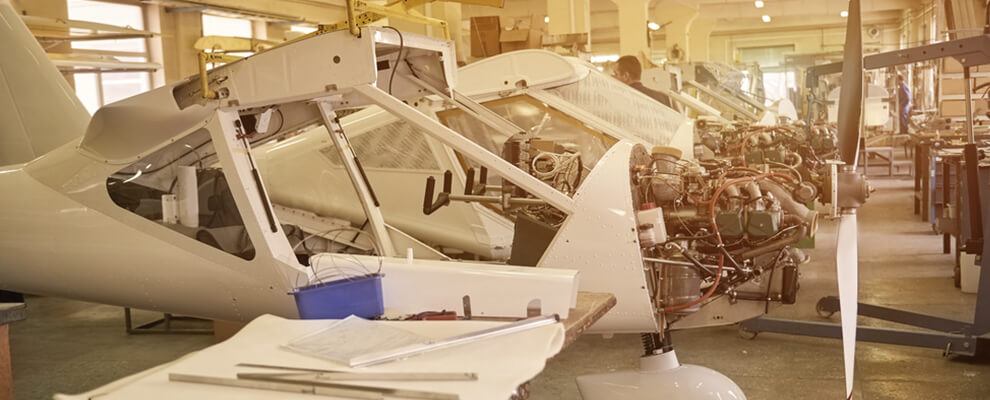Aerospace manufacturing is one of the most complex processes, given the incredibly high importance of aircraft reliability. A crash can cripple a company. Boeing’s woes with the 737-MAX severely hampered their growth and limited orders, for example, and those issues could have been avoided with more careful testing and better solutions to issues. With renewed emphasis on safety, aircraft manufacturers expect their suppliers to uphold a higher standard. How can you make your business a better partner for aircraft manufacturing?

Safe Flight: The Importance of Aerospace Manufacturing Testing
The Aerospace Industry Holds the Highest Standards
The United States Federal Aviation Administration (FAA) is considered the world’s primary authority on aircraft regulations. Since so many markets must comply with US rules to fly there, the FAA is the de facto regulator for global aviation. The FAA holds the aerospace industry to an extremely high standard, with new aircraft certifications taking years to complete.
However, aerospace companies often go beyond the FAA’s standards, holding their operations and suppliers even more accountable. Given that they have a greater liability in the event of an accident, it’s understandable. Consider some of the additional requirements that aerospace companies impose. If you operate in the aerospace industry, you need to be able to perform all of these functions and more.
Testing in a Variety of Conditions
Changing conditions can greatly affect the structural integrity of components. Aircraft deal with severe changes in normal operations. Temperatures at cruising altitude can be subzero, while temperatures on the ground could be scorching on the tarmac. Aircraft, therefore, need to be tested at a wide range of temperatures. The Middle East region is often used as a place to test operations in hot weather conditions. Your company can offer a competitive advantage in this regard.
However, you need specialized equipment to go beyond standard atmospheric temperatures. An ideal test bed will reach temperatures well below zero and above ambient. In addition, you’ll want to install test chambers that can accommodate variable air characteristics such as humidity.
Simulating Long-term Use With Advanced Machines
Given that aircraft are expected to last 20-30 years after purchase, suppliers need to be able to cram decades of long-term testing into a short development cycle. The industry standard has increased from 10 to the power of 7 (10,000,000 cycles) to 10 to the power of 10 (1 billion cycles). Advanced fatigue testing machines can perform thousands of repetitive impacts or oscillations per second to rapidly rack up these testing cycles in months instead of years.
You will also need equipment to log this data and record it properly. Modern machinery equipped with digital devices, core components in a digital transformation, can make this process possible.
Virtual Testing Accelerates Real-world Testing
While virtual testing can never replace real-world flight hours, virtual testing can get an aircraft ready for real-world test flights faster. Today’s computers can perform much more advanced simulations that take into account hundreds of variables. When an accurate model is put into a simulation, engineers can evaluate its airworthiness without having to assemble a prototype. Major problems can be detected before manufacturing and assembly begins, reducing R&D costs.
This same principle can be applied to the parts you produce. With aircraft manufacturers embracing model-based engineering, you can see how your part performs alongside the overall model. You can virtually test your components before you start production, improving your reliability as a provider.
New Testing Challenges in the Aerospace Industry
Although testing has always been of paramount importance, new aircraft designs have made it even more challenging. Modern aircraft have more components than before due to advances in technology. In addition, aircraft manufacturing has begun to rely more on composite materials to reduce weight. These pose new challenges for manufacturers and their suppliers.
Testing New Materials
Composite materials are booming in the aerospace industry. Older aircraft, like the 767 or the USAF F-18, contained relatively few composite pieces: just 3 and 10% respectively. Compare those figures to modern aircraft like the 787 or F-35, which use 50 and 40% composite components, respectively. Due to the more advanced processes needed to produce composites, they are susceptible to more types of failure. Sheer stress and compression can vary significantly, requiring more testing to validate these components.
The trend towards more composites is only going to continue. The cost savings long-term due to reduced fuel consumption make these components vital for the industry. Your ability to produce and test them properly will determine your success in the industry going forward. Improving your manufacturing and testing capacity now will be pay dividends in the future.
More Complex Systems Call for More Digital Testing
Aircraft systems have added numerous digital systems to facilitate autopilot features, even to the point of automated takeoff and landing. Militaries have shifted their budgets towards unmanned aircraft, which rely on digital systems to analyze data and take action remotely. These systems have vulnerabilities that their analog counterparts lack, and vice versa. A drone’s camera, for instance, could be affected by lasers. RF interference can have more serious consequences as more sensitive components are introduced into designs.
Companies need to test their sensors against a wider array of threats, both natural and man-made. Safety testing also has to consider the potential for cyberattacks on aircraft as they are increasingly connected to the internet through satellite connections.
Digital Transformation for the Aerospace Industry
In order to stay competitive in the aerospace manufacturing industry, you need the tools that major manufacturers are using. You need a fully-digital workflow that can take data from your machines and turn it into useful insights. Automation can help you reach testing benchmarks faster. A digital transformation can accomplish these tasks.
Contact SAAB RDS to schedule a meeting with one of our aerospace digital transformation experts.
